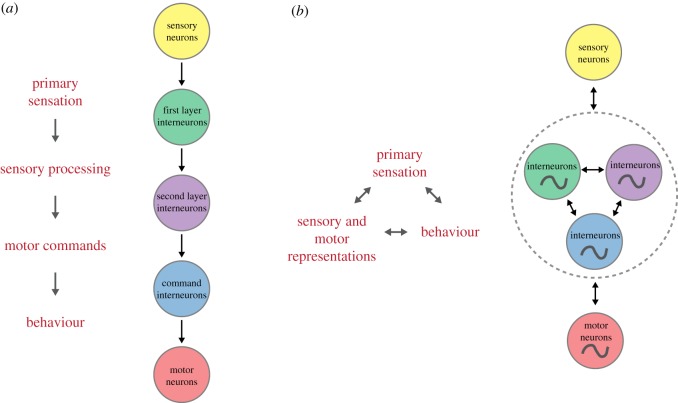Figure 1.
Two contrasting models of sensorimotor flow in C. elegans. (a) Segregated sequential computations. The transformation from sensory to motor representations is mainly feed-forward and functionally segregated at the neural circuit levels. Computations are performed in a sequential temporal order. (b) Distributed computations. More consistent with experimental data is a distributed representation of sensory and motor variables across neuronal circuits. Feedback between most elements is an important property of the system. Inputs are integrated with the internal dynamics of neural circuits (oscillator symbols). Computations could be performed in a concurrent fashion (double arrow heads). This model enables dynamic reciprocal interactions between the brain, body and environment.

